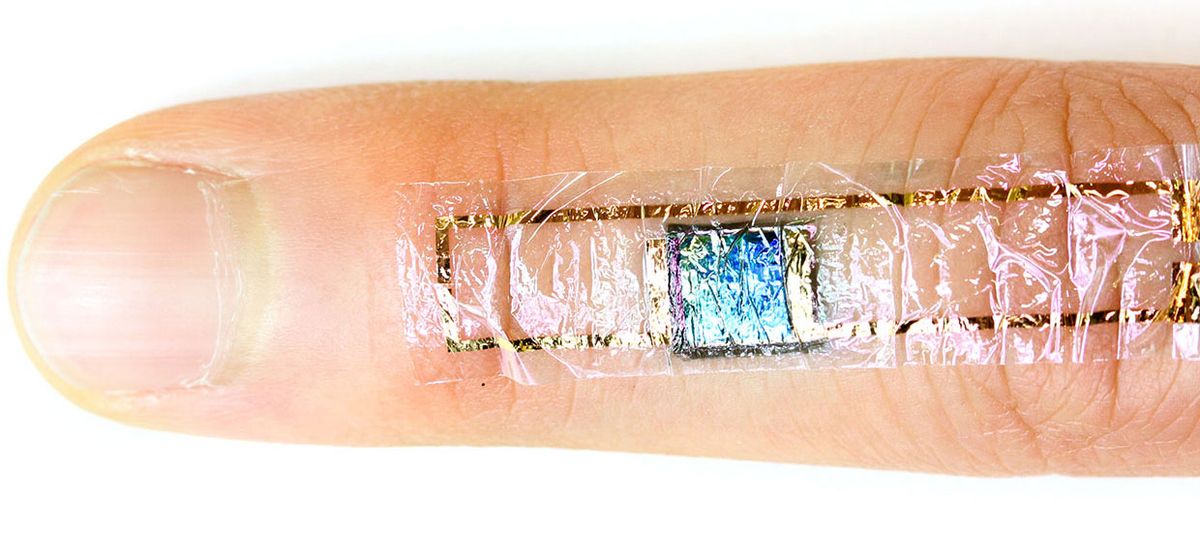As electronics decrease in size and increase in flexibility, it’s becoming harder and harder to power them. Now, a team in Japan has married a tiny, effective solar cell to a flexible biosensor to create a heartbeat monitor that powers itself.
It’s the latest work from Takao Someya’s team at the Riken Center for Emergent Matter Science in Saitama, Japan, building on their library of ultraflexible, washable, and breathable wearable sensors. As if that were not impressive enough, the sensors are pretty, too: Some resemble sleek gold tattoos, others pulse with green and red LED lights.
The new self-powering feature, described last week in the journal Nature, solves a problem the team first confronted years ago: How does one maintain a steady power supply without cords?
“We realized that the unstable output power was a problem if we use only a battery as power source because we cannot avoid the problems of replacement/recharging of batteries,” says Kenjiro Fukuda, a senior research scientist on the Someya team.
So the team spent three years investigating a lightweight self-powering system for their sensors. It took plenty of trials and errors, notes Fukuda, but in the end they integrated an electronic biosensor into a flexible photovoltaic cell that the team had previously created for use in textiles.
The solar cell, only about 10 nanometers wide, is made of layers of different materials, including zinc oxide, that improve the efficiency of the cell over similar flexible solar cells. The layers are fabricated in nanometer-size patterns that improve the cell’s overall efficiency and give it unique rainbow colors.
Once the devices were made, the researchers stuck them onto human skin and rat heart tissue, shined bright light on them, and successfully detected heartbeats. What’s more, the heart-rate signals were three times better than those of similar sensors with external power sources, according to an accompanying editorial in Nature.
The flexible solar cells were able to convert up to 10.5% of the light energy into electricity. That is “among the highest reported values of power-conversion efficiency for ultraflexible devices,” note the authors of the editorial.
That 10.5% was more than enough to power the team’s cardiac biosensor, which requires less than 1 volt, notes Fukuda. The team tested the device under dimmer lights, mimicking typical room light conditions, and it continued to function well.
Currently, the technology could be used to monitor heartbeats during exercise, Fukuda says. With accuracy improvements, the team hopes it can eventually be used in hospitals to monitor patients.
Next up, they will keep improving the power supply and the device’s ability to withstand air, water, heat, and pressure. They’re also exploring how to integrate other types of biosensors and how to best transmit biological signals and data to users, says Fukuda.
“Integration with wires transmission and/or memory devices are important next step,” he notes.
Megan Scudellari is an award-winning freelance journalist based in Boston, Massachusetts, specializing in the life sciences and biotechnology. She was previously a health columnist for the Boston Globe and has contributed to Newsweek, Scientific American, and Nature, among others. She is the co-author of a college biology textbook, “Biology Now,” published by W.W. Norton. Megan received an M.S. from the Graduate Program in Science Writing at the Massachusetts Institute of Technology, a B.A. at Boston College, and worked as an educator at the Museum of Science, Boston.



